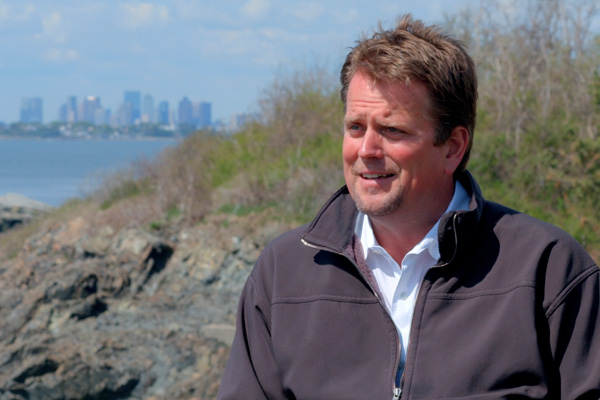Hot and bothered: climate change and the ecology of fear

Fear isn’t just a human emotion—it’s also a powerful ecological phenomenon. Geoff Trussell, professor and director of Northeastern’s Marine Science Center in Nahant, Massachusetts, has been studying the ecology of fear since he first came to the university back in 2002.
He’s discovered some surprising things: When prey living in the intertidal zone sense a predator nearby, they are much less efficient at converting energy into growth. They produce so much nervous energy in the form of elevated metabolism, stress hormones, heat-shock proteins, and antioxidant enzymes that there isn’t a lot left over to build new tissues.
Trussell, who is chair of the Department of Marine and Environmental Sciences, believes this fact can be a critical driver for determining how an overall ecosystem will fare. Resources and predator abundance will always fluctuate, but it’s how the middle species deal with those fluctuations that determines the way the whole system will respond. As he explained, “It’s that species in the middle that have to trade off their need to feed with the risk of being eaten by a predator that’s ultimately going to shape how the system behaves.”

Snails are a middle consumer, meaning they are both predator and prey. Photo by Geoff Trussell.
But there’s one thing that’s been missing from this calculus: the role of climate change. Some studies have examined how climate change interacts with fear, Trussell said, but most of them haven’t been very realistic. The problem, he explained, is that they all imagine a constantly elevated temperature based on climate change projections put forth by the Intergovernmental Panel on Climate Change. They don’t account for natural climate variation seen on a local scale.
“If you bake anything under a high temperature all the time, you’re going to get an impact,” Trussell said. So in new research published in the journal Global Change Biology, Trussell and his team took a different approach. The researchers built a state-of-the-art system that allows them to constantly adjust the water and air temperatures in their experimental habitats, holding them 2.5 degrees Celsius above actual temperature that is continuously measured in Nahant.
The conservative nature of their approach makes their striking results even more significant, Trussell said. They found that when a prey species, in this case a snail called Nucella Lapillus, sensed the chemical cues of a predator, the invasive green crab, it ate fewer mussels and thus as expected experienced less growth.
But when the team introduced the warming scenario, that effect was even more pronounced. Despite eating just as many mussels as in the non-warming scenario, the snails actually lost weight under the warming conditions.
“You’ve got these animals that are already burning a lot of energy because they’re worried about getting eaten,” Trussell explained. “And then you throw on top of that the stress that’s imposed by temperature increases and eventually what you end up seeing is that the animals struggle to make a living.”
The combined effects of predation risk and warming seem to create even bigger challenges for these middle species, which Trussell believes are integral to the overall health of an ecosystem. The results, he said, suggest that the impacts of climate change may be most significant in areas where the fear of being eaten is particularly important to community dynamics.
“Very rarely are species out there in isolation just dealing with temperature and its potential increases. They’re interacting with other species as well and all the challenges that they present, Trussell said. “So looking at how climate is impacting these interacting species is what we really need to do if we’re going to understand the ecological consequences of climate change.”





